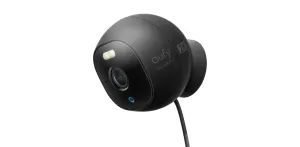Why I Decided to Get an Indoor Security Camera
Let me start with a quick story. Last year, during a particularly windy night, our family was startled awake by what sounded like someone trying to break into our garage. Turns out, it was just a couple of fallen branches scratching against the door. That incident, though harmless, got me thinking about security—more specifically, about the peace of mind that comes from knowing what’s happening inside your home when every strange noise occurs.
I decided it was time to invest in some indoor security cameras, not just for those middle-of-the-night scares but also to keep an eye on things while we’re away from home. If you’ve been on a similar fence about enhancing your home security, let me walk you through the details and personal experiences that helped me choose the top wireless indoor security cameras.
What to Look For in a Wireless Indoor Security Camera
- Video Quality: High-definition (HD) video is a must. You’ll want at least 1080p resolution for clear pictures.
- Field of View: A wider field of view will capture more of the room. Anything above 130 degrees is generally solid.
- Night Vision: Because a lot of what you want to monitor could happen after dark.
- Storage options: Some cameras offer local storage, while others rely on cloud services, sometimes at an additional cost.
- Smart Features: Look for features like motion detection, sound detection, and compatibility with other smart home devices.
- Privacy: Knowing how your data is handled and secured by the camera’s manufacturer is crucial. (security.org)
You can also check out this helpful guide on placement tips for indoor home security cameras to get the most coverage out of your setup.
Armed with this checklist, I dived into the market to find something that would tick all these boxes without breaking the bank or being too complex to operate.
Top Picks for Wireless Indoor Security Cameras
After rifling through reviews, testing out a few models, and yes, making a couple of returns, here are the top contenders that found a place in my home and why they might work for yours too:
Blink Mini – Compact Size with Mighty Features
I started off with the Blink Mini. This tiny device surprised me with 1080p HD video quality and night vision capabilities. What really set it apart was its integration with Amazon Alexa. I could actually arm the camera with a simple voice command—a neat feature for when you’re running out the door.
Wyze Cam Pan – Full-Room Coverage
The Wyze Cam Pan was a revelation for its price point. It offers 360-degree coverage and pans automatically when it detects motion, ensuring that you have eyes on any movement. The setup was a breeze, and the app interface is intuitive. This cam notably supports local storage via a microSD card, which I prefer for privacy reasons.
Arlo Pro 4 – Excellence in Outdoor Compatibility
Yes, I know it’s marketed mainly for outdoor use, but the Arlo Pro 4 works brilliantly indoors too. Its standout feature is the direct connection to Wi-Fi without needing a hub, and the superior video quality at 2K HDR puts it on another level. It has a built-in siren too, which I hope never to use, but it’s good to know it’s there. (cnet.com)
For broader home security integration, check out how it compares in this article on IP security cameras for home.
Nest Cam (Indoor, Wired) – Smart Home Synchronization
Last but not least, the Nest Cam. This camera integrates seamlessly with other Google Home products, which is a major plus for someone like me who loves their tech to be interconnected. The smart alerts differentiate between people and pets, cutting down on unnecessary notifications.
Tips for Setting Up Your Indoor Security Camera
- Placement is key: Ensure your camera has a clear view of the area you're most concerned about. Avoid obstructions like lamps or plants.
- Secure your network: As these cameras connect to your Wi-Fi, ensure your home network is secure to prevent unauthorized access. Here's a great guide on connecting wireless security cameras to your Wi-Fi.
- Check the regulations: Be aware of privacy laws in your area regarding recording, especially if you hire outside help who enter your home.
- Regular updates: Keep the camera’s firmware updated to protect against vulnerabilities.
And finally, familiarize yourself with the app and settings. Spend some time tinkering with the features—trust me, understanding how your camera reacts to various settings will enhance your security setup significantly.
Parting Thoughts
Hopefully, my journey into the world of indoor security cameras sheds some light on your path. It’s about feeling safer, sure, but it’s also about the convenience and control over your home environment. Whether it's checking on your pets while at work, making sure your kids are playing safely, or just confirming that those weird noises at night are nothing to beware of, a good indoor camera can make all the difference.
Think about what features matter most to you, do a bit of research, and take the leap. Your peace of mind is worth it.





